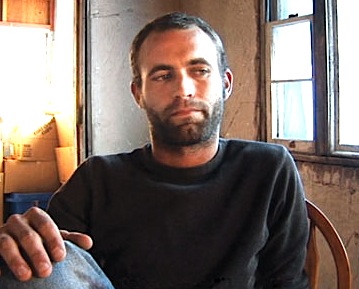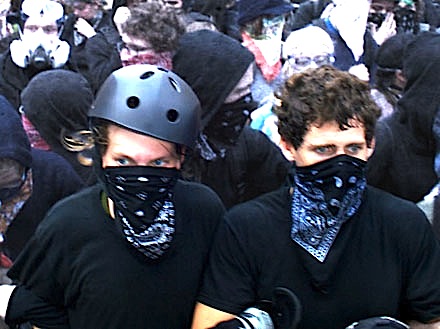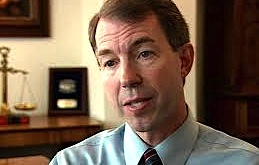RESISTANCE CINEMA Presents “BETTER THIS WORLD” a film by KATIE GALLOWAY and KELLY DUANE DE LA VEGA, Loteria Films & The Independent Television Service, (2011, 89 min)
WHEN: Sunday April 8, 2012 1:15pm
WHERE: Community Church NYC Gallery Room, 28 East 35th st. btwn Park & Madison Aves.
ADMISSION: Free, donations appreciated
 How did two boyhood friends from Midland, Texas wind up arrested on terrorism charges at the 2008 Republican National Convention? Better This World follows the journey of David McKay (22) and Bradley Crowder (23) from political neophytes to accused domestic terrorists with a particular focus on the relationship they develop with a radical activist mentor, in the six months leading up to their arrests. A dramatic story of idealism, loyalty, crime and betrayal, Better This World goes to the heart of the War on Terror and its impact on civil liberties and political dissent in post-9/11 America.
How did two boyhood friends from Midland, Texas wind up arrested on terrorism charges at the 2008 Republican National Convention? Better This World follows the journey of David McKay (22) and Bradley Crowder (23) from political neophytes to accused domestic terrorists with a particular focus on the relationship they develop with a radical activist mentor, in the six months leading up to their arrests. A dramatic story of idealism, loyalty, crime and betrayal, Better This World goes to the heart of the War on Terror and its impact on civil liberties and political dissent in post-9/11 America.
The story begins in Midland Texas six months before the Republican National Convention is to ta ke place in Minnesota. Crowder and McKay are part of a group planning to go to the convention and participate in protests. At that point neither had ever had any experience in political protest and had no predisposition to extremism and in particular violence, either against property or persons. Enter Brandon Darby, an experienced activist ten years their senior who quickly becomes a mentor and role model. It is Darby who continually pushes the envelope in suggesting that activists must be willing to go beyond mere protest and must be willing to raise the stakes, be confrontational and if necessary get physical.
ke place in Minnesota. Crowder and McKay are part of a group planning to go to the convention and participate in protests. At that point neither had ever had any experience in political protest and had no predisposition to extremism and in particular violence, either against property or persons. Enter Brandon Darby, an experienced activist ten years their senior who quickly becomes a mentor and role model. It is Darby who continually pushes the envelope in suggesting that activists must be willing to go beyond mere protest and must be willing to raise the stakes, be confrontational and if necessary get physical.
 On the second day of protests in Minnesota, after the police had confiscated a stack of protective shields made by the activists to protect themselves from police batons, McKay and Crowder buy the necessary materials and make 8 molotov cocktails and store them in their
On the second day of protests in Minnesota, after the police had confiscated a stack of protective shields made by the activists to protect themselves from police batons, McKay and Crowder buy the necessary materials and make 8 molotov cocktails and store them in their room. It is now revealed that Darby has been working with the FBI as an informant. The boys’ room is raided by the police, the Molotov cocktails seized, and the two are arrested as domestic terrorists.
room. It is now revealed that Darby has been working with the FBI as an informant. The boys’ room is raided by the police, the Molotov cocktails seized, and the two are arrested as domestic terrorists.
Now the torturous story unfolds. Who was really responsible? What exactly  happened? Were they entrapped? Was there any serious intention of actually using the explosives, and if so how? All of these questions drive the legal case against them as the government tries to get them to accept a plea bargain and get them to testify against each other. The devastating emotional impact on the shocked middle class families of the two young men is deftly portrayed through the use of taped phone
happened? Were they entrapped? Was there any serious intention of actually using the explosives, and if so how? All of these questions drive the legal case against them as the government tries to get them to accept a plea bargain and get them to testify against each other. The devastating emotional impact on the shocked middle class families of the two young men is deftly portrayed through the use of taped phone conversations from prison and filmed family gatherings.
conversations from prison and filmed family gatherings.
Whether or not the case for entrapment is clear or not, one thing that is certain is that the criminal justice system has no place for nuance, subtlety, or grey areas. It’s a black and white world of good and evil that pushes the truth to the side like an annoying encumbrance.